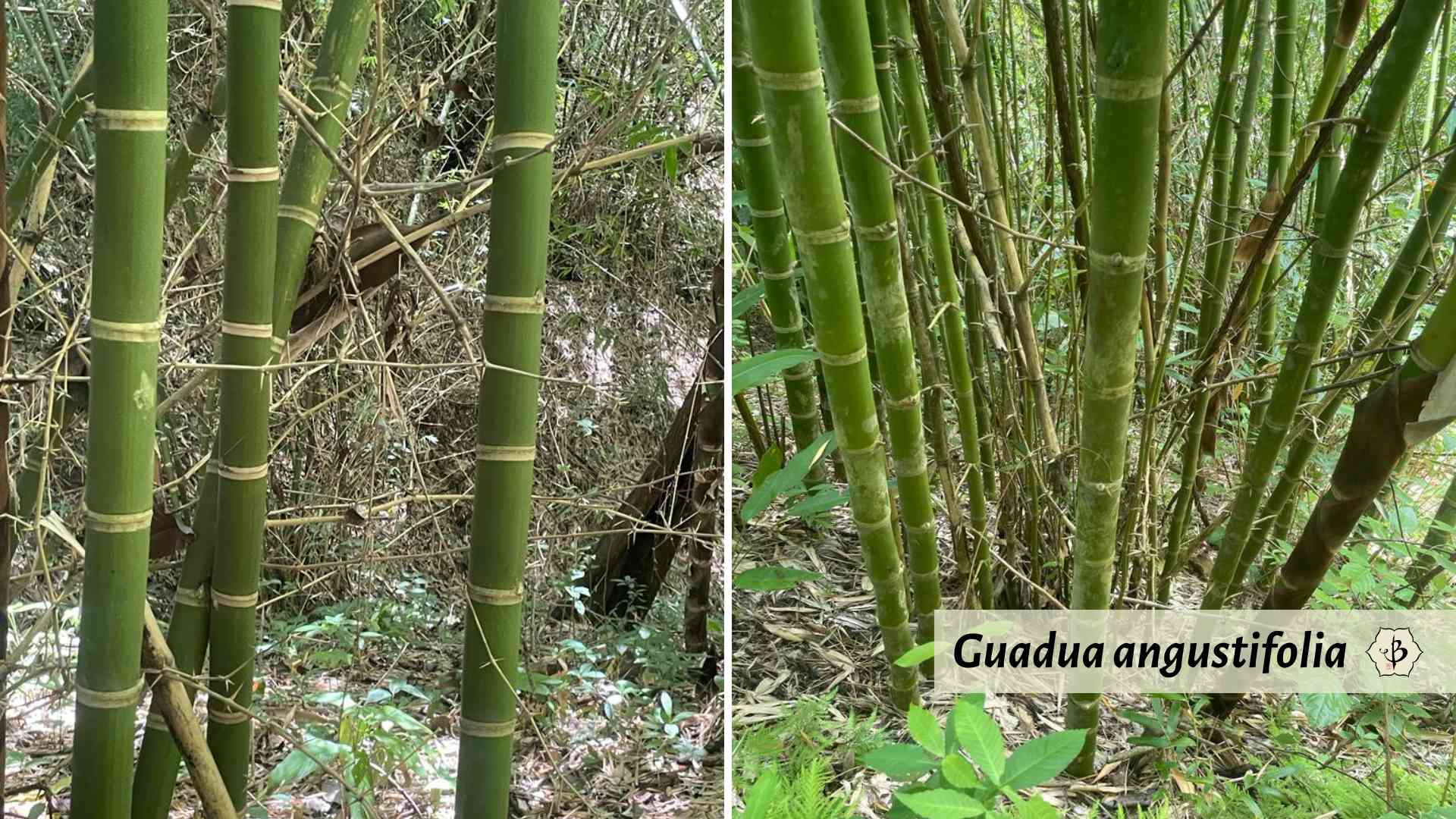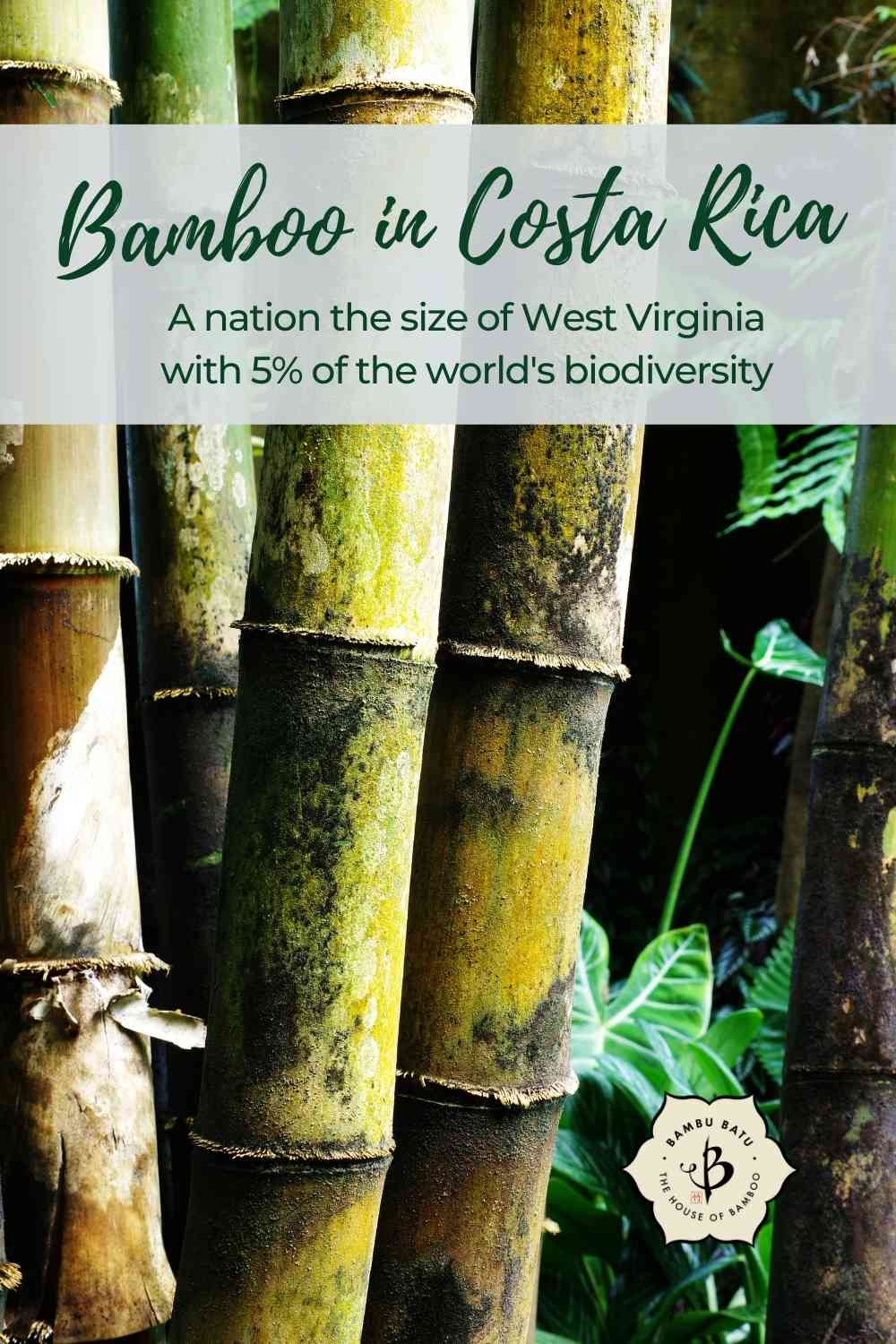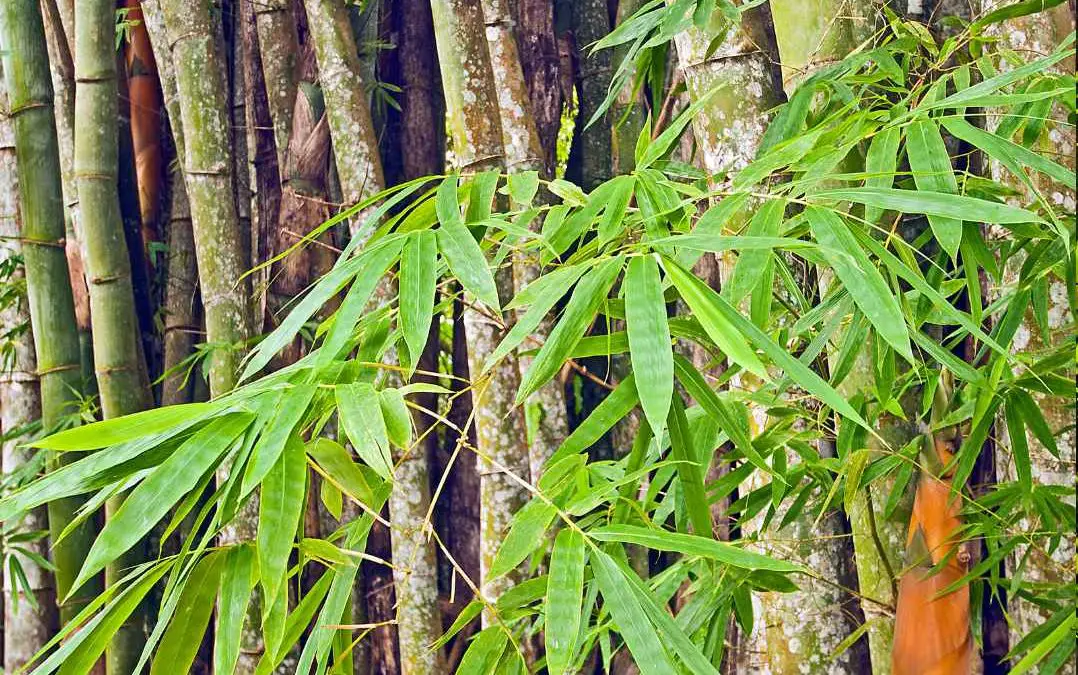If you’re heading off on a round-the-world tour of bamboo destinations, Costa Rica might not be the first place on your list. You’d probably be more interested in going to China, Bali and even Colombia. But this narrow strip if Central America is well worth a visit. The country is simply brimming with bamboo, as well as a bounty of other exotic flora and fauna. You can even sign up here for a master course in bamboo building and construction.
With about 40 species of woody bamboo, Costa Rica is believed to have more native bamboo diversity than any Central American country, not including Mexico. These varieties belong to eight different genera of neotropical bamboo, the most prevalent being Arthrostylidium, Chusquea, Guadua and Rhipidocladum. This is in addition to an assortment of herbaceous (non-woody) bamboo as well as some non-native species cultivated for commercial purposes.
NOTE: This article first appeared in June 2021, most recently updated in February 2024.
Biodiversity in Costa Rica
Just 8 to 12 degrees north of the equator, Costa Rica sits squarely in the sweet spot for tropical rainforests. On the narrow isthmus that links North and South America, it has coastlines on both the Atlantic (Caribbean) and the Pacific. The country has a dry side and a wet side, with elevations stretching from sea level up to 12,500 feet, and a wealth of microclimates.
All these factors result in conditions that are ideal for an enormous array of plant and animal species. In fact, this tiny country, roughly the size of West Virginia, contains an astonishing five percent of the world’s biodiversity.
When I think of Costa Rica, I imagine cloud forests teeming with bromeliads and wild orchids. I also imagine spider monkeys and exotic tree frogs. But of course, no tropical wonderland would be complete without a profusion of flourishing bamboo.
Varieties of bamboo in Costa Rica
Indeed, Costa Rica is believed to have more native bamboo than any Central American country, not counting Mexico, with about 40 indigenous species. Most of this diversity belongs to eight different genera of neotropical (New World) bamboo, but primarily Arthrostylidium, Chusquea, Guadua and Rhipidocladum.
Additionally, Costa Rica is also home to a number of non-woody or herbaceous bamboo species, of the Olyreae tribe. Common in the tropical rain forests of the New World, these tender shrubs are not nearly as useful or recognizable as their woody cousins.
Economically speaking, the most important species of bamboo in Costa Rica, and the rest of Latin America, would be Guadua angustifolia. Though not strictly native to the country, the locals do cultivate it here for its superior strength and utility in building and construction.
Genus Arthrostylidium
This neotropical genus comprises about 30 species distributed throughout Central and South America, including a handful of Costa Rican natives. As scandent or climbing bamboo, they tend to be long and spindly, and therefore less popular ornamentally and unimportant economically. They do, however, have a valuable role to play in the diverse, tropical habitat, forming a kind of link between the forest floor and the canopy.

Genus Chusquea
Better known among bamboo growers, Chusquea is the most diverse genus of New World bamboos, with over 150 species. Their natural range extends from Southern Chile and Argentina all the way up to Central Mexico, and from sea level to well above 10,000 feet in elevation. More than a dozen species of Chusquea are native to Costa Rica.
This genus is popular among bamboo growers as an ornamental, with its attractive colors and great adaptability. Many species are hardy from 0º F all the way to 100º F. Gardeners also appreciate the fact that they are clumpers, rather than runners, and therefore non-invasive.
It’s also interesting to note that these bamboos have solid (instead of hollow) stems. This makes them very useful for crafts and light construction. But most varieties are only a couple of inches thick, so they are unsuitable for larger building projects.
Genus Guadua
In Latin America, Guadua includes the largest and most economically important of all bamboos, namely G. angustifolia. This giant timber variety is renowned for its size and the strength of its culms, 50 to 60 feet tall and several inches thick.
Only a few species of Guadua are native to Costa Rica, and G. angustifolia is not one of them. But they have introduced it here to grow commercially as a supremely strong and renewable building material.

Genus Rhipidocladum
This is another exotic genus of bamboo, with just over a dozen species and five endemic to Costa Rica. The name Rhipidocladum means “fan-like branches”, and for this reason, these plants often look more like palms than bamboo. They can grow 30-50 feet tall, but with slender culms less than an inch thick.
Building with bamboo in Costa Rica
As in other tropical parts of the world, bamboo has been recognized as an exceptional building material here in Costa Rica. And if you want to learn more about building with bamboo, I would encourage you to sign up for a course at Natural Building Costa Rica. For most of us, it’s a bit easier than getting to Bamboo U in Bali, Indonesia.
The private school, located in the idyllic Diamante Valley, offers fantastic retreats and workshops. Week-long immersion courses cover all topics of bamboo cultivation, harvesting, design, engineering and construction. No experience is required, just a genuine passion. Package deals include bamboo classes, daily yoga, comfortable accommodations, and meals with strictly organic, vegan, locally sourced ingredients.
Visit their website or contact Trey Abernathy for more details.
BambuTico, in southern Costa Rica, is an agro-industrial company, specializing in the cultivation and commercialization of bamboo. Their plantations consist primarily of Asian bamboo, specifically Dendrocalamus asper and Bambusa multiplex.
Bamboo specialists in Costa Rica
In addition to the bamboo-loving humans of Costa Rica, Latin America is also home to another fascinating bamboo specialist. Be on the lookout and you might spot the yellow-billed cacique (Amblycercus holosericeus) with its solid black plumage and distinctly yellow beak. This tropical bird feeds on insects and various vegetation, but generally shows a preference for bamboo.
Learn more
If you enjoyed this overview of bamboo in Costa Rica, be sure to check out some of these other stimulating and informative articles.
- Introducing Bamboo: Genus by genus
- Where does bamboo come from?
- Native bamboo of North America
- Best bamboo for building and construction
- The 1,000 Bamboo Villages Project
FEATURED IMAGE: Bamboo forest in Costa Rica, probably some species of Guadua



























Thank you for this article. I enjoyed learning about the
Bamboo variety available in Costa Rica.
Would love to learn even more